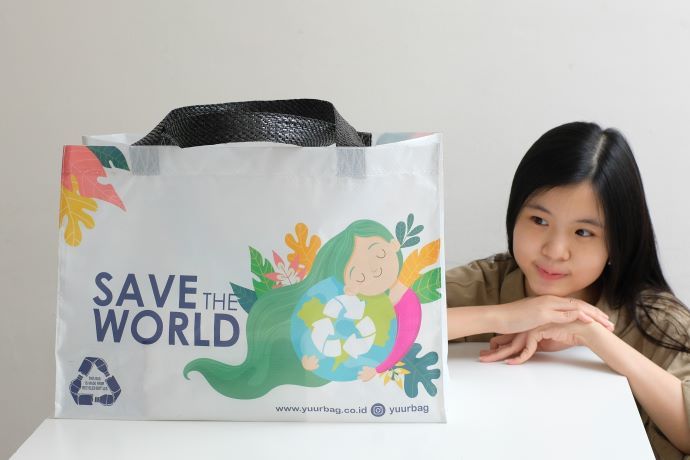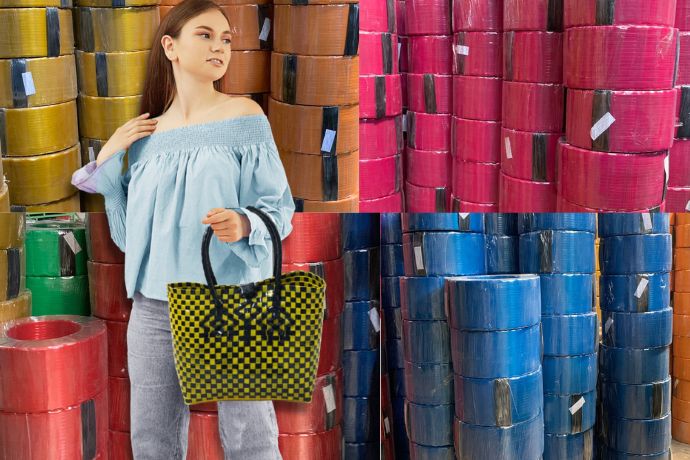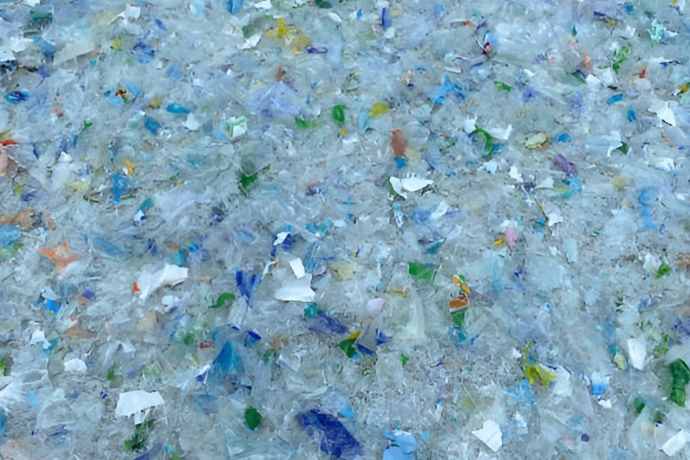Recycled PET for Clothing — Benefits, Limits & Sourcing
Key Takeaways:
- Recycled PET (rPET) is safe, durable, and reduces reliance on virgin petroleum-based polyester.
- LCA data shows rPET can cut greenhouse gas emissions by up to 79% compared to virgin polyester and uses far less water than cotton.
- Limitations remain: microfiber shedding, recyclability of blended fabrics, and potential quality trade-offs in fine yarns.
- Fashion leaders like Patagonia, Veja, and Ganni prove that high-performance, eco-conscious fashion with rPET is not only possible but increasingly in demand.
Why Recycled PET Matters in Fashion
Sustainability is no longer a passing trend—it’s reshaping how clothes are designed and sourced. Among the most impactful innovations is recycled PET (rPET), derived primarily from used plastic bottles.
If you’ve wondered whether rPET clothing is safe, how it compares to cotton, or whether it’s breathable, this guide breaks it down—so you can make informed choices as a consumer or as a brand.
What is Recycled PET in Clothing?
Recycled PET comes from post-consumer plastic waste. The process is straightforward but transformative:
- Collection & cleaning — bottles are sorted and contaminants removed.
- Shredding & melting — plastics are broken into flakes and melted down.
- Spinning — molten PET is spun into fibers and woven into textiles.
The result is a fabric that looks and performs like virgin polyester—but with a lower environmental footprint.
By the numbers: Life Cycle Assessments (LCAs) show rPET reduces greenhouse gas emissions by up to 79% compared to virgin polyester and requires 59% less energy. It also uses far less water than conventional cotton, which can demand over 2,700 liters for a single T-shirt.
Also Read : Recycled PET vs. Virgin PET - A Comprehensive Comparison
Is Recycled PET Fabric Safe to Wear?
Yes. rPET clothing meets the same safety standards as virgin polyester. The recycling process removes contaminants, and the fibers are tested for skin safety.
If you’ve worn polyester activewear, sports jerseys, or jackets, you’ve already experienced something very similar. The main difference: rPET reduces waste instead of adding to it.
Also Read : Products Made from Recycled PET - Endless Possibilities
rPET vs Cotton vs Virgin Polyester: How Do They Compare?
Feature | Recycled PET (rPET) | Cotton | Virgin Polyester |
Durability | Strong, resists stretching/shrinking | Soft, but wears out faster | Strong, petroleum-based |
Moisture-Wicking | Yes—keeps you dry | No—absorbs sweat | Yes—similar to rPET |
Breathability | Good (depends on weave/blend) | Very breathable | Moderate |
Eco-impact | Uses existing waste, lower CO₂ | High water/pesticide use | Relies on fossil fuels |
Best For | Activewear, fashion, outerwear | Casual, summer wear | Sportswear, fast fashion |
Is rPET Fabric Breathable?
Breathability depends on fabric construction. Some rPET textiles are engineered for airflow, especially in sportswear. Many brands blend rPET with organic cotton or bamboo to boost softness and breathability. Always check the weave and blend if comfort is a priority.
Also Read : Consumer Demand and Market Trends for Recycled PET Products
Limitations & What to Watch For
While rPET offers big benefits, it’s not a silver bullet:
- Microfiber shedding: Like all synthetics, rPET fabrics can shed microplastics during washing. Filters, gentler wash cycles, or specialized laundry bags can help.
- Quality trade-offs: Mechanical recycling can slightly reduce fiber strength for very fine yarns. This matters more for luxury textiles than for activewear.
- Recyclability of blends: Once rPET is blended with cotton, elastane, or other fibers, it becomes much harder to recycle again.
- Greenwashing risk: Not all “recycled polyester” claims are verified. Look for Global Recycled Standard (GRS) or Recycled Claim Standard (RCS) certifications to ensure authenticity.
How Brands Are Using Recycled PET
Several global fashion leaders showcase how rPET works in real products:
- Veja – Sources rPET from Brazilian recycling cooperatives to make sneaker uppers.
- Patagonia – Pioneered rPET use in jackets and fleece, integrating it into their supply chain to reduce carbon emissions.
- Ganni – Partnered with Ambercycle’s Cycora® technology to replace virgin polyester with textile-to-textile recycled content.
Also Read : What You Must Know Before Purchasing Recycled PET Resin
Practical Guidance for Brands Considering rPET
If you’re a clothing brand or textile manufacturer, here’s what to keep in mind:
- Request certifications (GRS or RCS) for supply chain transparency.
- Check LCAs or datasheets to validate carbon and water savings.
- Blend strategically — rPET + cotton or bamboo for comfort, but keep recyclability in mind.
- Test for performance — tensile strength, dye uptake, and wash durability.
Final Thoughts: Ready to Switch to rPET?
Recycled PET proves that sustainability and performance can go hand in hand. It reduces plastic waste, cuts emissions, and works across fashion categories from sportswear to sneakers to luxury apparel.
At Langgeng Jaya Group, we’re committed to sustainability—offering high-quality recycled PET flakes that help drive eco-friendly fashion forward. Want to dive deeper into how rPET is transforming the industry?
Explore more insights on our blog and discover how recycled PET can reshape your clothing line or wardrobe for a greener future.



